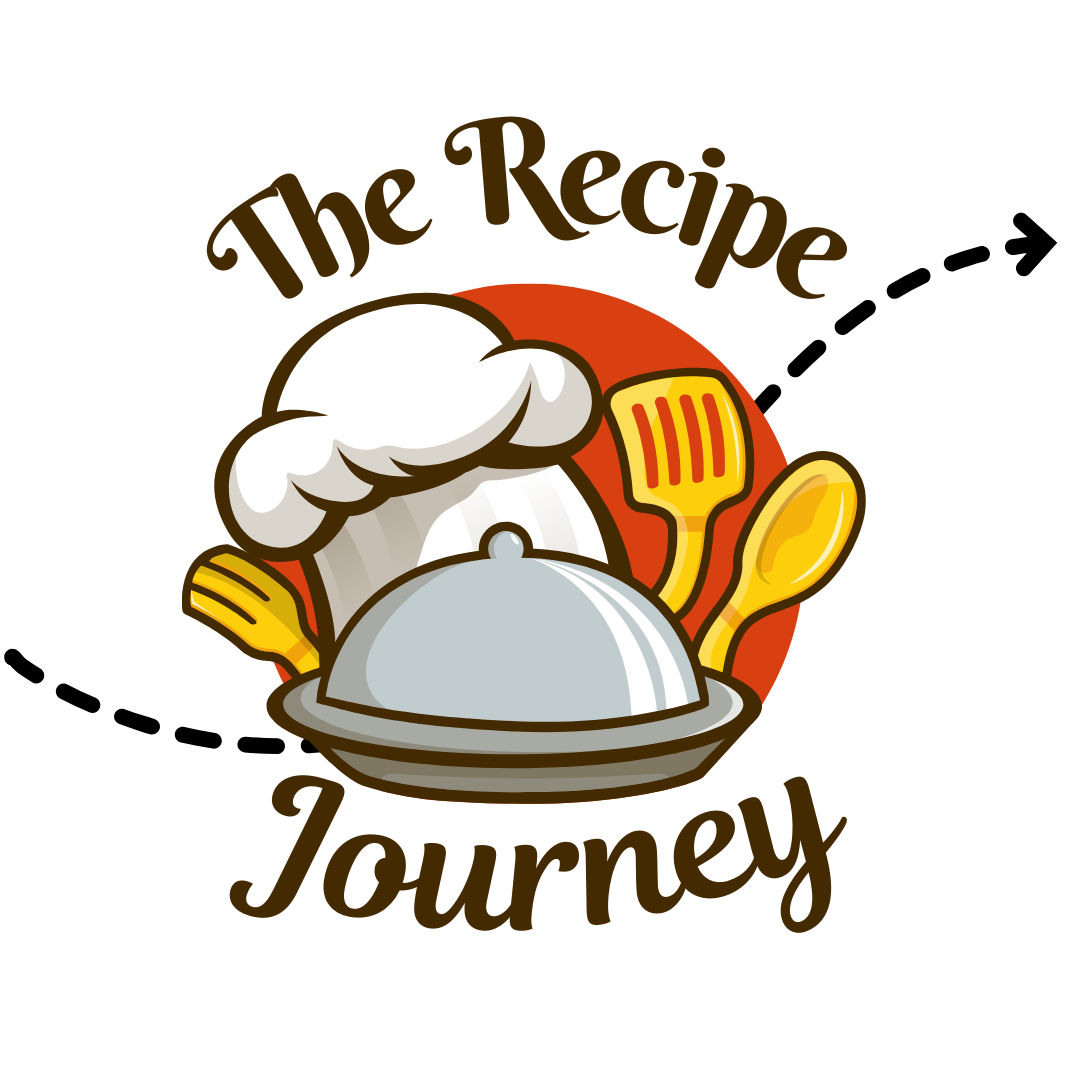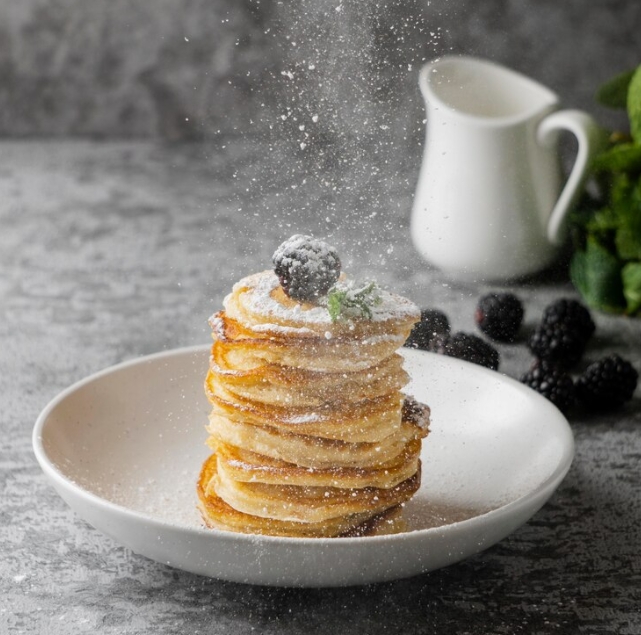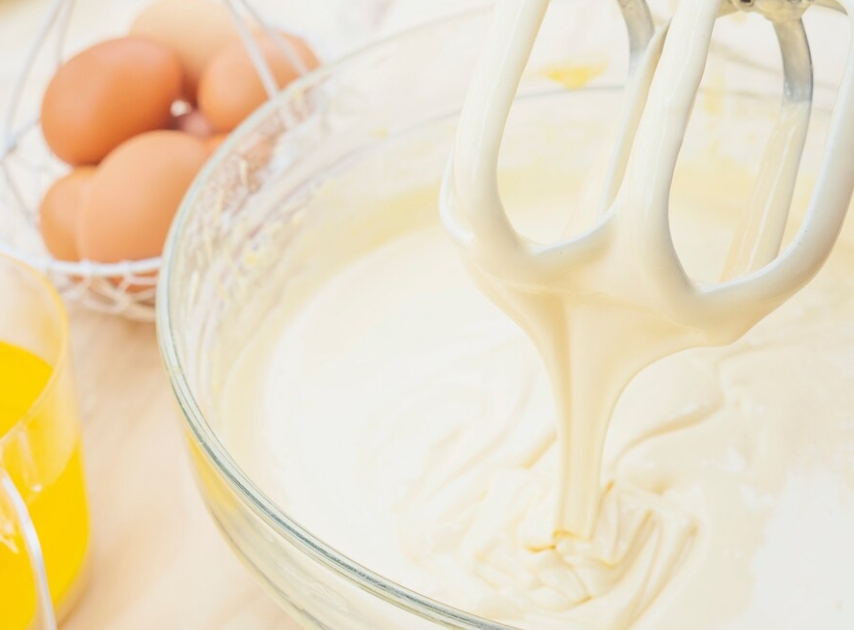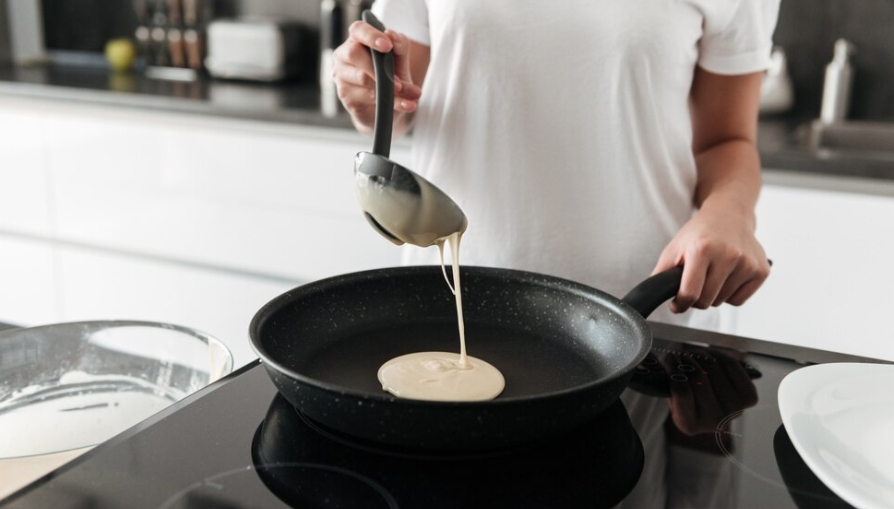Pancakes’ fluffy texture, comforting scent, and countless personalization options all contribute to its allure. Because of their versatility, pancakes are a standout on any brunch table and have been a breakfast favorite for ages. Pancakes are the quintessential comfort dish, whether they are served plain or laden with toppings.
What You Can Learn From This Recipe?
This recipe shows you how to consistently make pancakes that are absolutely fluffy. You’ll discover how crucial it is to balance the wet and dry ingredients, sieve the dry ingredients, and get the right batter consistency.
What I Love About This Recipe?
This recipe’s dependability and simplicity are what I love most about it. When having brunch for family and friends or on lazy mornings, it’s my go-to option. The pancakes are consistently soft, golden, and delicious.
What’s the Best Way to Store Leftovers?
Pancake leftovers can be kept in the fridge for up to three days in an airtight container. For a fresh-off-the-griddle texture, reheat them in a skillet or in a toaster.
What to Serve With It?
For a full breakfast, serve these pancakes with fruit salad, scrambled eggs, or crispy bacon. They go very well with a cup of coffee, orange juice, or even hot chocolate for drinks.
Pancakes: Fluffy Morning Perfection
Description
A stack of steaming pancakes is the perfect way to start the day. These fluffy, airy treats have been loved for generations as a breakfast staple. Pancakes are made with basic ingredients from the cupboard and can be made in a variety of ways. For a classic touch, sprinkle them with butter and maple syrup; alternatively, use chocolate chips, whipped cream, or berries. Pancakes add coziness and happiness to any table, whether they are served on a weekday or on a leisurely Sunday morning.
Ingredients
Instructions
How to Make Pancakes?
-
Prepare the Dry Ingredients
In a large mixing bowl, sift together the flour, baking powder, salt, and sugar.
-
Mix the Wet Ingredients
In a separate bowl, whisk the milk, egg, melted butter, and vanilla extract until well combined.
-
Combine the Mixtures
- Gradually pour the wet ingredients into the dry ingredients, stirring gently.
- Mix until just combined; a few lumps are fine, as overmixing can make the pancakes dense.
-
Rest the Batter
Let the batter rest for 5 minutes to allow the baking powder to activate.
-
Heat the Griddle
- Preheat a non-stick griddle or skillet over medium heat and lightly grease with butter or oil.
- For each pancake, pour 1/4 cup of batter onto the hot surface.
- Cook until bubbles appear on the surface and the edges begin to firm up, about 2-3 minutes.
- Flip the pancake and cook for an additional 1-2 minutes, or until golden brown.
-
Serve
Stack the pancakes on a plate, top with your favorite toppings, and serve warm
Nutrition Facts
Servings 12
- Amount Per Serving
- Calories 150kcal
- % Daily Value *
- Total Fat 7g11%
- Saturated Fat 4g20%
- Cholesterol 35mg12%
- Sodium 200mg9%
- Potassium 100mg3%
- Total Carbohydrate 18g6%
- Dietary Fiber 1g4%
- Protein 4g8%
* Percent Daily Values are based on a 2,000 calorie diet. Your daily value may be higher or lower depending on your calorie needs.
Note
- For super fluffy pancakes, substitute buttermilk for regular milk.
- Customize by adding blueberries, chocolate chips, or bananas to the batter.
- Any leftover pancakes can be frozen and easily reheated for a quick breakfast.
Journey of Pancakes
The origins of pancakes can be traced back to ancient civilizations thousands of years ago. With variations seen in almost every civilization, they are among the earliest types of bread. Pancakes come in a wide variety of shapes and flavors, from French crêpes to Greek tiganites. However, North America is where the current fluffy pancake got its start, thanks to the inclusion of baking powder, which gave it a distinctive lift.
From Ancient Griddles to Modern Breakfasts
Simple flour and water combinations were used to make the first pancakes, which were then baked on hot stones or griddles. As time went by, more components like butter, milk, and eggs were added, making the meal more opulent. Pancakes were a Shrove Tuesday custom in medieval Europe, a way to use up perishable ingredients prior to Lent.
A Staple in American Culture
Pancakes became popular in the United States throughout the colonial era and developed into the fluffy breakfast mainstay that we are familiar with today. In homage to Native American customs, maple syrup was added, and the two became a classic combination. Since they provide a delicious and substantial start to the day, pancakes have come to be associated with substantial breakfasts.
Global Variations
Every culture has its own unique take on pancakes, which are enjoyed all across the world. Russian blini are tiny and frequently served with caviar, but Japanese soufflé pancakes are incredibly fluffy. Injera, which is produced from teff flour and fermented to give it a sour flavor, is used in Ethiopia as both bread and a dish.
Pancakes bring people together over shared meals and are the epitome of comfort and camaraderie. They are a classic meal that is loved for its simplicity and the happiness it adds to the morning table.
I appreciate you coming along on this amazing adventure with me!







